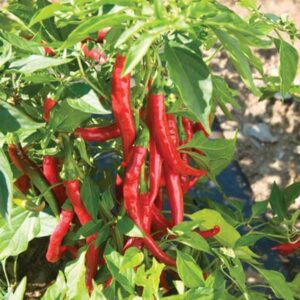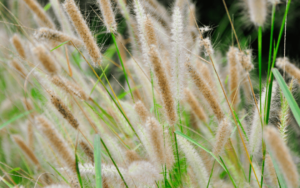Revolutionizing Lawns: The Rise of Buffalo Grass
Buffalo grass is a warm-season perennial grass native to the Great Plains of North America.
Buffalo grass is a dense, fine-textured grass that forms a thick turf, effectively choking out weeds and reducing the need for chemical treatments. One of the key benefits of buffalo grass is its minimal water requirements. Once established, this grass can survive on little to no supplemental irrigation, making it an ideal choice for regions with hot summers and limited rainfall. Additionally, buffalo grass has a deep root system that helps it access water deep in the soil, further enhancing its drought resistance. Another advantage of buffalo grass is its low mowing needs. This grass typically grows to a height of around 4 inches, much lower than traditional turfgrasses, reducing the frequency of mowing and overall maintenance. Buffalo grass can thrive in a wide range of soil types, from sandy to clayey, and it is quite resilient to foot traffic and other stresses. In conclusion, buffalo grass is a versatile and hardy grass variety that offers numerous benefits for homeowners looking to create a sustainable and low-maintenance lawn.It is well-known for its drought tolerance and low maintenance requirements, making it a popular choice for homeowners seeking a sustainable and eco-friendly lawn option..
Consider planting buffalo grass to enjoy a lush and vibrant lawn without the need for excessive water or chemicals.Its drought tolerance, minimal water requirements, and low mowing needs make it an attractive option for those seeking a beautiful yet eco-friendly turf..
Buffalo Grass: A Hardy and Low-Maintenance Turf Option
Buffalo grass (Buchloe dactyloides) is a popular warm-season grass known for its hardiness and low maintenance requirements, making it an excellent turf option for lawns in various climates. Native to the Great Plains region of North America, Buffalo grass has adapted to drought conditions and thrives in full sun areas with well-drained soil. This grass variety requires minimal water once established, making it a sustainable choice for environmentally conscious gardeners. Its dense growth pattern and fine texture create a lush green carpet-like appearance that is attractive and inviting. Buffalo grass is known for its durability, as it can withstand heavy foot traffic and is resistant to pests and diseases. With proper care, such as periodic mowing and minimal fertilization, Buffalo grass can maintain its healthy appearance throughout the year. Overall, Buffalo grass is an ideal choice for those seeking a low-maintenance, resilient, and sustainable turf option for their outdoor spaces.
Discover the Resilient Beauty of Buffalo Grass: A Sustainable Landscaping Trend Sweeping the Nation
Buffalo grass, a resilient native grass species to North America, has been gaining popularity as a sustainable landscaping trend sweeping the nation. This hardy and low-maintenance grass is renowned for its ability to thrive in adverse conditions, making it an excellent choice for eco-conscious homeowners looking to reduce water usage and maintenance costs. As urban areas face increasing challenges due to climate change and water scarcity, buffalo grass emerges as a practical solution for sustainable landscaping practices. One key advantage of buffalo grass is its exceptional drought tolerance, requiring minimal water once established. This makes it ideal for regions with water restrictions or those seeking to lower their overall water consumption. Additionally, buffalo grass forms a dense turf that effectively suppresses weeds, reducing the need for chemical herbicides. In addition to its environmental benefits, buffalo grass offers a lush and verdant aesthetic appeal that enhances the landscape’s natural beauty.
Whether used for lawns, meadows, or erosion control, buffalo grass brings a touch of natural elegance to any outdoor setting. Furthermore, buffalo grass requires minimal fertilization and mowing compared to traditional grass varieties, reducing the environmental impact of lawn care practices. Its deep root system also improves soil health by enhancing moisture retention and preventing soil erosion. By choosing buffalo grass for landscaping projects, homeowners can contribute to a more sustainable and resilient ecosystem while enjoying a beautiful and hassle-free outdoor space. In conclusion, buffalo grass represents a sustainable landscaping trend that aligns with the growing demand for environmentally-friendly practices.Its fine texture and attractive blue-green hue provide a visually pleasing backdrop for gardens and outdoor living spaces..
As more individuals recognize the benefits of buffalo grass in water conservation, natural resource preservation, and overall landscape sustainability, this resilient grass species is likely to continue its upward trajectory as a popular landscaping option nationwide.Its adaptability, low maintenance requirements, and aesthetic appeal make it a desirable choice for both residential and commercial applications..
Buffalo Grass Varieties: Characteristics and Benefits
| Buffalo Grass Facts | |
|---|---|
| Scientific Name | Buchloe dactyloides |
| Type | Warm-season perennial grass |
| Height | 3-6 inches tall |
| Water Needs | Drought tolerant, requires little water |
| Sun Exposure | Full sun |
| Maintenance | Low maintenance, mowing infrequently |
| Soil Requirements | Well-draining soil |
| Uses | Turfgrass, erosion control, habitat for wildlife |
FAQ
Sure! Here are some frequently asked questions about buffalo grass:

1. What is buffalo grass?
Buffalo grass (Buchloe dactyloides) is a warm-season grass native to North America that is commonly used for lawns and landscaping due to its drought tolerance and low maintenance requirements.
2. Is buffalo grass suitable for my area?
Buffalo grass is best suited for regions with hot summers and dry conditions, such as the central and southern United States. It can also tolerate cold temperatures and is commonly found in the Great Plains region.
3. How often should I water buffalo grass?
Buffalo grass is drought-tolerant and requires infrequent watering once established. During the growing season, water the grass deeply but infrequently, allowing the soil to dry out between watering sessions.
4. How often should I mow buffalo grass?
Buffalo grass grows slowly and typically requires infrequent mowing compared to other grasses. A height of 2-3 inches is ideal for buffalo grass, and it is recommended to mow it every 2-3 weeks during the growing season.
5. Does buffalo grass require fertilization?
Buffalo grass is a low-maintenance grass that generally does not require frequent fertilization. A light application of a balanced fertilizer in the spring can help promote growth, but be cautious not to over-fertilize as this can lead to thatch buildup.
6. How do I control weeds in buffalo grass?
Maintaining a healthy lawn by proper watering and mowing practices can help prevent weed growth in buffalo grass. Hand pulling weeds and spot-treating with herbicides labeled for use on buffalo grass can also help control weed infestations.
7. Can I plant buffalo grass from seed?
Buffalo grass can be established from seed, plugs, or sod. Planting buffalo grass from seed is a cost-effective option, but it requires patience as the grass grows slowly compared to other turfgrasses. Ensure proper soil preparation and follow seeding instructions for best results.
8. How do I care for buffalo grass in the winter?
Buffalo grass goes dormant in the winter months and turns a straw-like color. To prepare buffalo grass for winter, mow it short before the first frost and avoid excessive foot traffic on the lawn during dormancy. Resume regular maintenance practices in the spring when the grass resumes growth.
I hope these FAQS help answer some common questions about buffalo grass. If you have any more questions, feel free to ask!
- Cat Palm vs Majesty Palm: Which Should You Choose? - June 30, 2024
- Flowers That Survive Winter: Discover the Exceptional No. 5 - June 30, 2024
- The Ultimate Guide to the Growth and Care of the Black Pagoda Lipstick Plant - June 29, 2024





